Related Research Articles

The Changos, also known as Camanchacos or Camanchangos, are an Indigenous people or group of peoples who inhabited a long stretch of the Pacific coast from southern Peru to north-central Chile, including the coast of the Atacama Desert. Although much of the customs and culture of the Chango people have disappeared and in many cases they have been considered extinct, in Chile they are legally recognized as an original indigenous people since 2020, and about 4,725 people self-declare that they belong to this ethnic group.

The Diaguita people are a group of South American indigenous people native to the Chilean Norte Chico and the Argentine Northwest. Western or Chilean Diaguitas lived mainly in the Transverse Valleys that incise semi-arid mountains. Eastern or Argentine Diaguitas lived in the provinces of La Rioja and Catamarca and part of the provinces of Salta, San Juan and Tucumán. The term Diaguita was first applied to peoples and archaeological cultures by Ricardo E. Latcham in the early 20th century.

Tarabuco is a Bolivian town in the department of Chuquisaca, capital of the Yamparáez Province and its first section, Tarabuco Municipality. It is best known as the home of the Yampara culture. Its people host the Pujllay festival in March each year. Members of the local indigenous community gather for Mass, parade in their colorful traditional costumes, drink plenty of chicha, and celebrate.

Pano-Tacanan is a proposed family of languages spoken in Peru, western Brazil, Bolivia and northern Paraguay. There are two close-knit branches, Panoan and Tacanan, with 33 languages. There are lexical and grammatical similarities between the two branches, but it has not yet been demonstrated that these are genetic.

Panoan is a family of languages spoken in western Brazil, eastern Peru, and northern Bolivia. It is possibly a branch of a larger Pano–Tacanan family.

Puquina is a small, putative language family, often portrayed as a language isolate, which consists of the extinct Puquina language and Kallawaya, although it is assumed that the latter is just a remnant of the former mixed with Quechuan. Puquina speakers are last mentioned in the early nineteenth century.

In South America, Indigenous peoples comprise the Pre-Columbian peoples and their descendants, as contrasted with people of European ancestry and those of African descent. In Spanish, indigenous peoples are referred to as pueblos indígenas, or pueblos nativos. The term aborigen is used in Argentina, and pueblos aborígenes is commonly used in Colombia. The English term Amerindian is often used in the Guianas. Latin Americans of mixed European and Indigenous descent are usually referred to as mestizos (Spanish) and mestiços (Portuguese), while those of mixed African and Indigenous ancestry are referred to as zambos.
Amahuaca is an indigenous language of the Amazon Basin in Perú and Brazil. It is also known as Amawaka, Amaguaco, Ameuhaque, Ipitineri, and Sayaco. Amahuaca is a Panoan language that is believed to be closely related to Cashinahua and Yaminawa. There around 220 speakers in Brazil, and around 328 speakers in Peru.

Asháninka is an Arawakan language spoken by the Asháninka people of Peru and Acre, Brazil. It is largely spoken in the Satipo Province located in the amazon forest. While there are low literacy rates in Asháninka, language use is vibrant among the Asháninka.
Ashéninka is the name that some varieties included in the Ashéninka-Asháninka dialect complex have traditionally received. These varieties belong to the Campan branch of the Arawak family. Ethnologue distinguishes seven languages throughout the whole complex, while Pedrós proposes a division in three languages based on the principle of mutual intelligibility. The varieties included in Ashéninka and Northern Ashé-Ashá have traditionally been called Ashéninka. Glottolog reflects Pedrós’ proposal, although considering the languages proposed by him as groupings of the languages that the Ethnologue distinguishes.
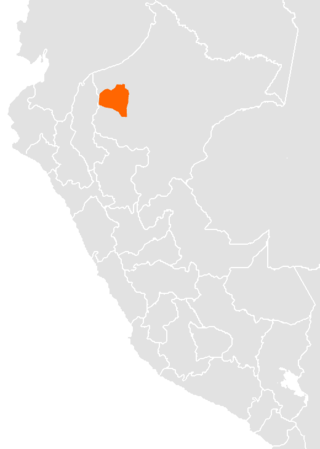
Candoshi-Shapra is an indigenous American language isolate, spoken by several thousand people in western South America along the Chapuli, Huitoyacu, Pastaza, and Morona river valleys. There are two dialects, Chapara and Kandoashi (Kandozi). It is an official language of Peru, like other native languages in the areas in which they are spoken and are the predominant language in use. Around 88.5 percent of the speakers are bilingual with Spanish. The literacy rate in Candoshi-Shapra is 10 to 30 percent and 15 to 25 percent in the second language Spanish. There is a Candoshi-Shapra dictionary, and grammar rules have been codified.
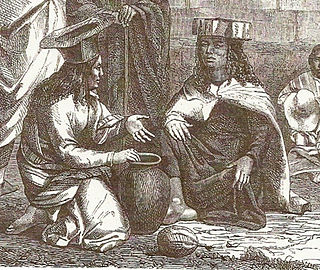
The Atacama people, also called Atacameño, are an Indigenous people from the Atacama Desert and altiplano region in the north of Chile and Argentina and southern Bolivia, mainly the Antofagasta Region.

The Huni Kuin are an Indigenous people of Brazil and Peru. Their villages are located along the Purus and Curanja Rivers in Peru and the Tarauacá, Jordão, Breu, Muru, Envira, Humaitã, and Purus Rivers in Brazil.
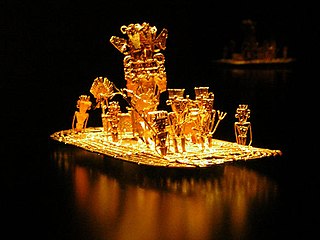
Knowledge of Muisca mythology has come from Muisca scholars Javier Ocampo López, Pedro Simón, Lucas Fernández de Piedrahita, Juan de Castellanos and conquistador Gonzalo Jiménez de Quesada who was the European making first contact with the Muisca in the 1530s.
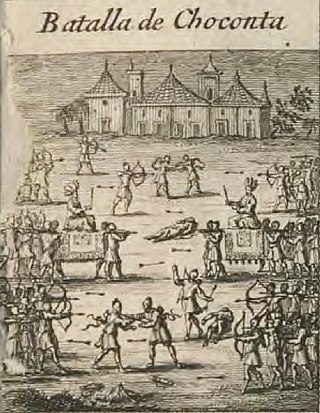
The Battle of Chocontá was one of a series of battles in the ongoing conflict between the northern and southern Muisca of pre-Columbian central Colombia. The battle was fought c. 1490 in the vicinity of Chocontá. An army of 50,000 southern Muisca guecha warriors, led by their ruler, or zipa, Saguamanchica, attacked 60,000 northern Muisca troops commanded by Zaque Michuá, who was supported by the Cacique of Guatavita.
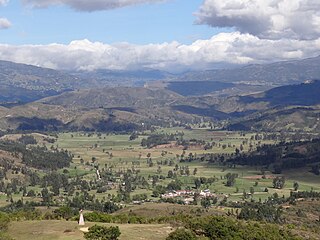
The iraca, sometimes spelled iraka, was the ruler and high priest of Sugamuxi in the confederation of the Muisca who inhabited the Altiplano Cundiboyacense; the central highlands of the Colombian Andes. Iraca can also refer to the Iraka Valley over which they ruled. Important scholars who wrote about the iraca were Lucas Fernández de Piedrahita, Alexander von Humboldt and Ezequiel Uricoechea.
Quitirrisí is the seventh district of the Mora canton, in the San José province of Costa Rica.
Ximena Anza Colamar is a Chilean politician of Atacameño descent. In 2021, she was elected to serve as the representative of the Atacameño people for a reserved seat in the Constitutional Convention.

The National Institute for Indigenous Affairs is a decentralised agency of the Government of Argentina responding to the Chief of the Cabinet of Ministers tasked with overseeing the government's policy on affairs pertaining to Argentina's various indigenous communities.
The Chiripá are a Guaraní indigenous people who live mainly in Paraguay in the area bounded by the Paraná River and the Acaray and Jejuí Rivers, while in Brazil they coexist with other Guarani groups in villages in the states of Mato Grosso do Sul, Paraná and São Paulo. The term ñandéva is used in Paraguay to refer to the tapietes. In Argentina they are found in small groups living among the Mbyas in the province of Misiones. They are highly acculturated but maintain their dialects and religious traditions.
References
- ↑ "Base de Datos de Pueblos Indígenas u Originarios". Base de Datos de Pueblos Indígenas u Originarios. Archived from the original on 2017-02-20.
- ↑ David, Fleck (2013). Panoan Languages and Linguistics (PDF).
This article needs additional or more specific categories .(June 2023) |